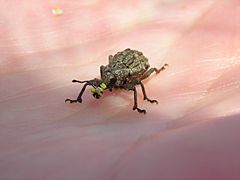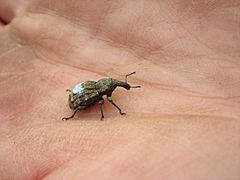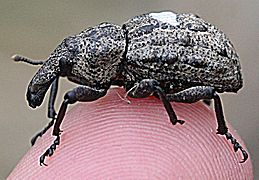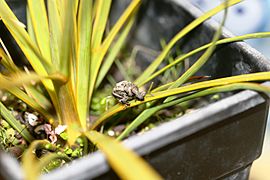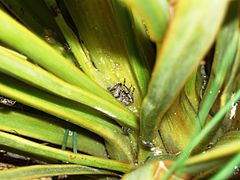Hadramphus tuberculatus facts for kids
Quick facts for kids Hadramphus tuberculatus |
|
|---|---|
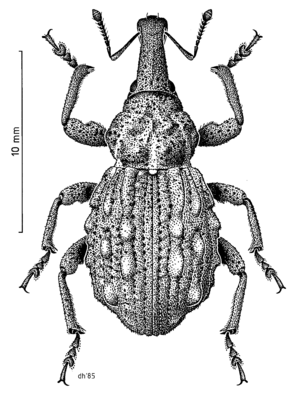 |
|
| Illustrated by Des Helmore | |
| Conservation status | |
| Scientific classification | |
| Kingdom: | |
| Phylum: | |
| Class: | |
| Order: | |
| Family: | |
| Subfamily: |
Molytinae
|
| Genus: | |
| Species: |
H. tuberculatus
|
| Binomial name | |
| Hadramphus tuberculatus (Pascoe, 1877)
|
|
| Synonyms | |
|
|
Hadramphus tuberculatus (known as the Canterbury knobbled weevil, Spaniard weevil or Banks Peninsula speargrass weevil) is a rare weevil endemic to Canterbury in the South Island of New Zealand. It was thought to be extinct in 1922 but was rediscovered in 2004.
Contents
Description
H. tuberculatus is a flightless weevil with a knobbed back. It reaches a length of 11.7–16.3 millimetres (0.46–0.64 in) and a width of 6.5–8.3 mm (0.26–0.33 in). It has a dark brown body with greyish-brown scales.
Taxonomy
This species was first described by Francis Pascoe in 1877 using specimens collected in Canterbury and supplied by Charles Marcus Wakefield.
Status
The knobbled weevil were apparently common over the Canterbury Plains in the 1870s. Possible causes for its disappearance were the removal by farmers of speargrass (Aciphylla), its host plant, and the arrival of predatory European rats. It was last seen in 1922, and was considered extinct until it was rediscovered in late 2004 by research students of the University of Canterbury at Burkes Pass near Lake Tekapo, South Canterbury, New Zealand. It is now listed as nationally endangered by the New Zealand Department of Conservation, and as critically endangered in the IUCN Red List. A detailed ecological study conducted by researchers at Lincoln University in 2009–2011 estimated the population size at Burkes Pass to be only 138 individuals in 2009, decreasing each year to 76 in 2011.
Gallery of images



